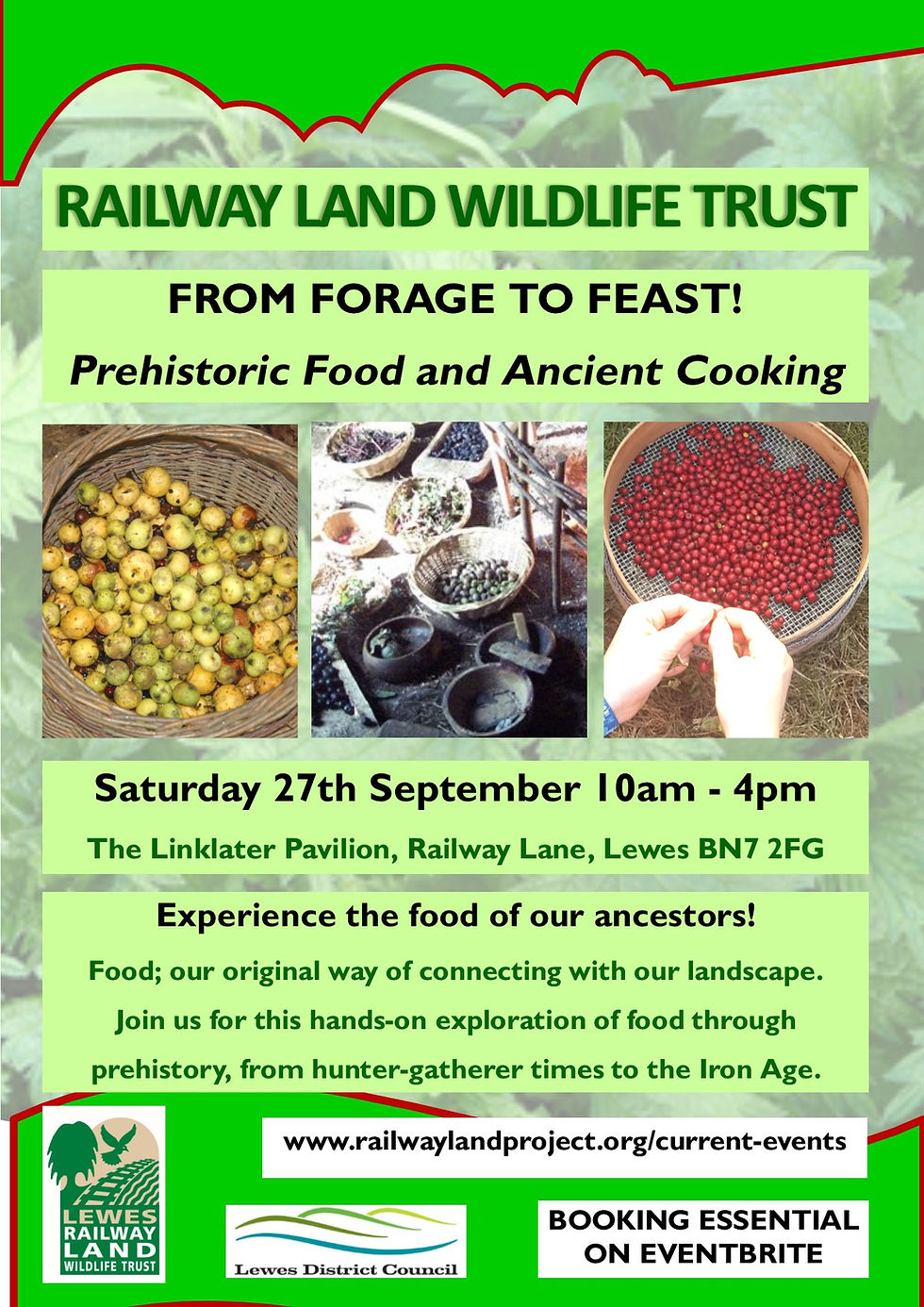White storks on display at the Railway Land
- Dec 29, 2022
- 3 min read
Return of the white stork!

For the first time in over 600 years the enormous nest of a white stork has mysteriously appeared on the Railway Land! The nest, positioned in the beautiful Heart of Reeds and easily viewable from a nearby mound, is guarded by a sentinel white stork, standing proud as he awaits the return of a suitable female bride when winter turns to spring!
The White Stork Challenge – part art project, part habitat creation, and part conservation initiative – was completed by Lewes Railway Land nature reserve staff and volunteers working with community rewilding experts at Wilderlife on 8th December 2021.
During a one-day workshop, the team took a behind-the-scenes look the importance of rewilding before focusing on their chosen species, the White Stork! As ‘rewilding engineers’ the team then spent the day constructing a life-sized stork nest by gathering and interweaving sticks, finding grasses, turf, and seeds, and creating a mini ecosystem that will operate like a giant bug hotel, providing homes for insects, small mammals, plants, birds, and other wildlife.
As the nest was taking shape, team members also put their artistic talents to the test by building a beautiful white stork with local artist Frankie Hornby. The stork, which stands at one-metre tall, was made from environmentally friendly and biodegradable materials. The body was constructed of chicken wire and wood, with organic cotton and hessian feathers dipped in bees wax for water proofing; and the legs and beak were painted with graphenstone paint, which absorbs carbon dioxide from the atmosphere as it dries!
Why are stork nests so important for other wildlife?
The white stork (Ciconia ciconia) is one of Europe’s most important ecosystem engineers (which means they engineer their environment and create places for other wildlife to thrive). As world leading home builders, stork nests are one of the largest of any bird and are also among the heaviest, sometimes reaching over a ton in weight! These super structures provide shelter for a mind boggling diversity of plants and animals with which the storks happily co-exist.
The stork’s nest is made of dry and long sticks laid in layers, and the thick inner lining consists of hay, straw, and manure. White stork nests are often used for decades, and each year they are repaired and expanded. The larger the nests get, the more valuable they become for other wildlife.
Mice and red squirrels have both nested within stork nests, as have numerous invertebrates, including wasps, ants, beetles, and mites. Earlier studies indicate that stork nests can be occupied by at least 34 species of mite. The nests are also particularly important for nesting and winter roosting house sparrows and tree sparrows, both of which have declined dramatically in the last 50 years. Incredibly, the stork’s nesting material also consists of the seeds of over 100 species of plants, creating a seed bank and dispersal mechanism for nearly 10,000 seedlings per nest!
The collapse of the construction industry!
Sadly, in the UK, white storks were hunted to extinction around 600 years ago. Their loss was bad news for so many of their co-habitants. It seems certain that if there were more white stork nests in the UK today, then there would be more wildlife in general! How can we solve this problem? One way in which we can contribute is by making our own stork nests and building homes for our native wildlife!
The importance of stork art!
Thankfully there is now renewed hope for the return of white storks in the UK, with a reintroduction programme currently underway at Knepp Estate in West Sussex. The number of breeding pairs is growing at Knepp, and free flying birds are once again being seen across Sussex! However, storks are reluctant to nest at new sites unless they see evidence of other nests and breeding birds in the area. For this reason, there is a chance that our nest and its ‘artistic stork in residence’ might just attract the real thing! Let’s hope this signals the return of this wonderful ecosystem engineer to the Ouse Valley soon!
If you would like to make your own stork nest or attend a stork nesting workshop please contact Helen Meade at coordinator@railwaylandproject.org or Dylan Walker at dylan.walker@wilderlife.org








Comments